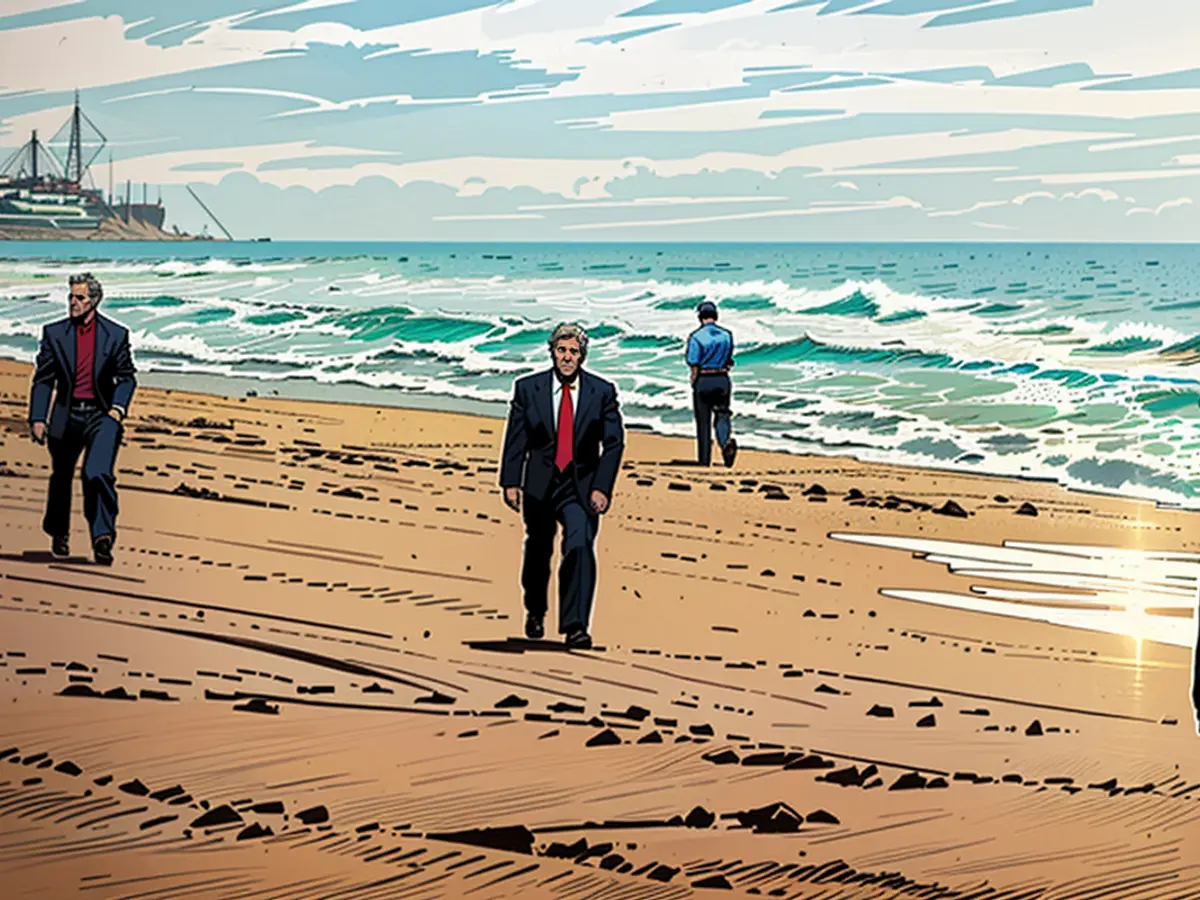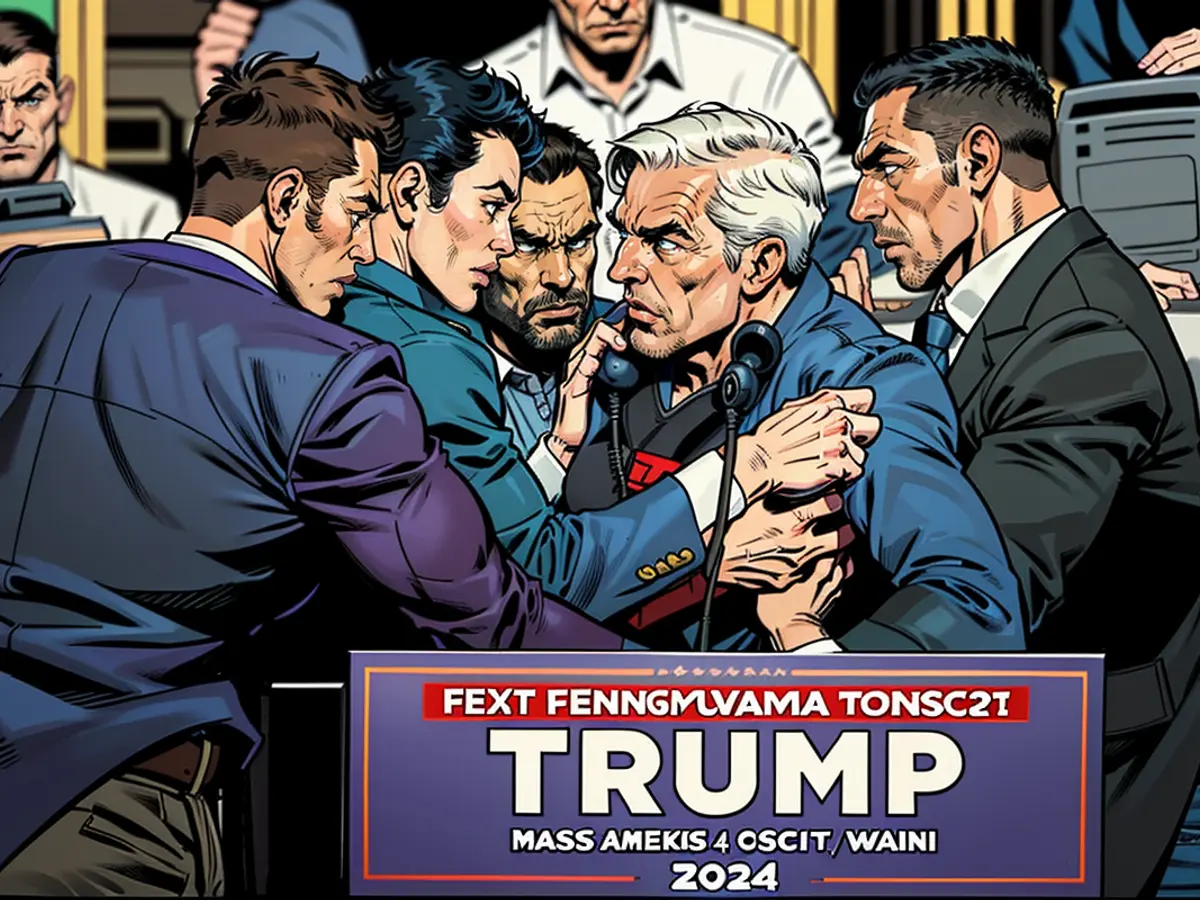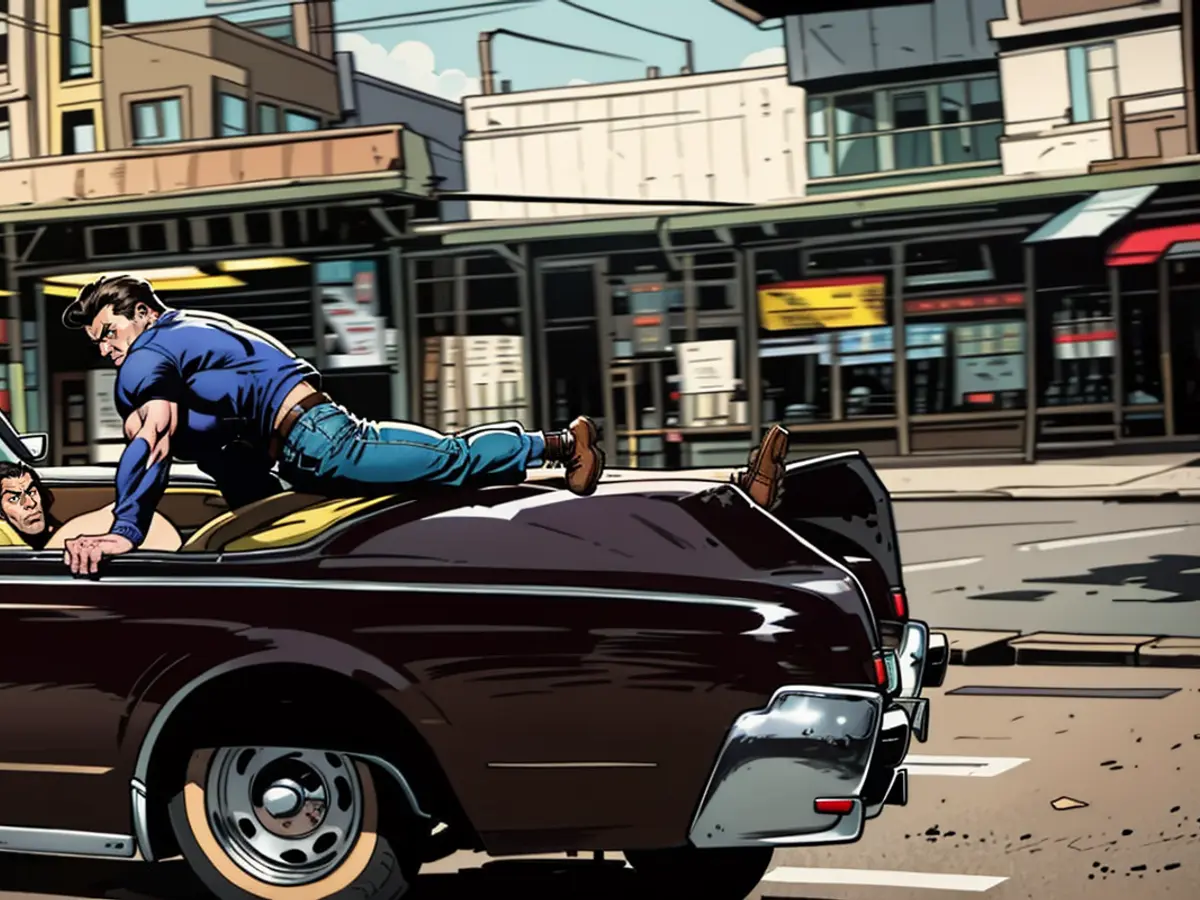The men and women 'in the line of fire'
Few people are closer to a US President, even former ones, than the agents of the Secret Service. When shots were fired at Trump, they instinctively gathered around him.
Even if the special agents of the American Secret Service couldn't shield Donald Trump from a gunshot wound, they still surrounded him and put themselves in harm's way. "In the line of fire" means "in the line of fire" in German. This is the public image many have of the Secret Service. Men and women who are ready to jump into the line of fire, willing to give their lives for the protection of the designated individual.
This image is portrayed in the Hollywood film "In the line of fire," where Clint Eastwood plays Secret-Service Agent Frank Horrigan, who failed to protect John F. Kennedy years ago and later redeemed himself with a heroic act. However, this public image is somewhat exaggerated, a myth.
Originally a Department Against Financial Criminality

Many Secret Service agents assigned to protect the current US President or his predecessors must always be vigilant, but they will never experience such a situation. Political attacks of this magnitude occur hardly every decade.
The Secret Service was not even founded for the protection of presidents. Its founding occurred in 1865 as a law enforcement agency. The protection of the head of state was formally transferred to the Secret Service in 1901 - after the assassination of the 25th US President, William McKinley. A significant portion of their work still focuses on combating financial criminality. The entire agency, according to their own statements, has approximately 3200 "Special Agents" and 1300 "Uniformed Division Officers."
Not all of the personal protectors come directly to the side of a US President, his predecessors, and their families. But those who stand out can eventually earn this prestigious task during their career. They must also be US citizens, at least 21 years old at the time of application, and generally not older than 37. They must pass various fitness, personality, and health tests. And they must work their way up for years to be allowed to protect the President.

In their work, it's not just about the "physical protection" the Secret Service claims to provide. They also deal with threats from biological and chemical weapons. In the past few decades, there have been numerous assassination plans against US Presidents that were discovered and thwarted, such as with letter bombs or nerve agents. That no president was harmed by these attempts is also a feat of the Secret Service and other security and investigative agencies.
Have the Men and Women Failed Trump?
Trump's personal protectors now find themselves "in the line of fire," as accusations of failure are concerned. How did the bodyguard manage to get on the roof? Was the preparation careless? Did they react too slowly? All of this will undoubtedly be meticulously investigated. Trump himself, who escaped a gunshot wound to the ear with a fortunate outcome, thanked the men and women who gathered around him after the attack.

The assassination attempt is likely to lead to the "physical protection" of high-ranking officials being scrutinized once again. However, Secret Service agents are also heavily reliant on how much politicians love the spotlight and how well they can convince them to stay away from it.
The Weakness of the Secret Service: The Presidents Themselves
Back in 2005, during a public appearance by then-US President George W. Bush in Georgia, a grenade was thrown towards the stage but failed to explode. A Secret Service agent was quoted by the BBC saying, "If it were up to us, we would put the President in a concrete bunker and nobody would see or hear him." However, he also acknowledged that the President needed to be seen by the public.

For decades, nothing comparable to the current assassination attempt in Butler, Pennsylvania, had happened. No instance where a US President was actually hit. It took a long time: in 1963, John F. Kennedy was shot. Ronald Reagan survived an assassination attempt in 1981. Since then, when was a US President hit by something? The shoe that flew towards George W. Bush in 2008 comes to mind. The then-US President managed to duck.
During Bush's tenure, the Secret Service was integrated into the newly created Homeland Security Ministry - this happened in 2003, in the aftermath of 9/11. Until then, the Secret Service reported to the Treasury Department.
Despite the Secret Service's efforts to thwart any threats, such as the discovery and neutralization of letter bombs and nerve agent plots, the recent assassination attempt against Donald Trump has sparked questions and accusations of failure within their ranks. Despite Trump's grateful expression of thanks to his protectors for their quick response, the incident has initiated a meticulous investigation into their preparations and actions.
The Secret Service's mandate extends beyond 'physical protection,' encompassing potential threats from biological and chemical weapons. Their ability to identify and neutralize numerous assassination plans against US Presidents throughout history has been a significant aspect of their success in securing the safety of our nation's leaders.








